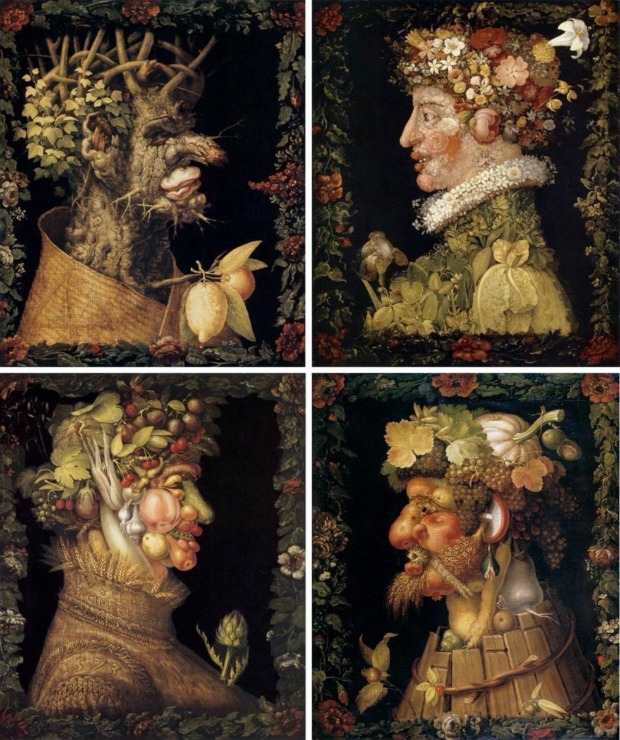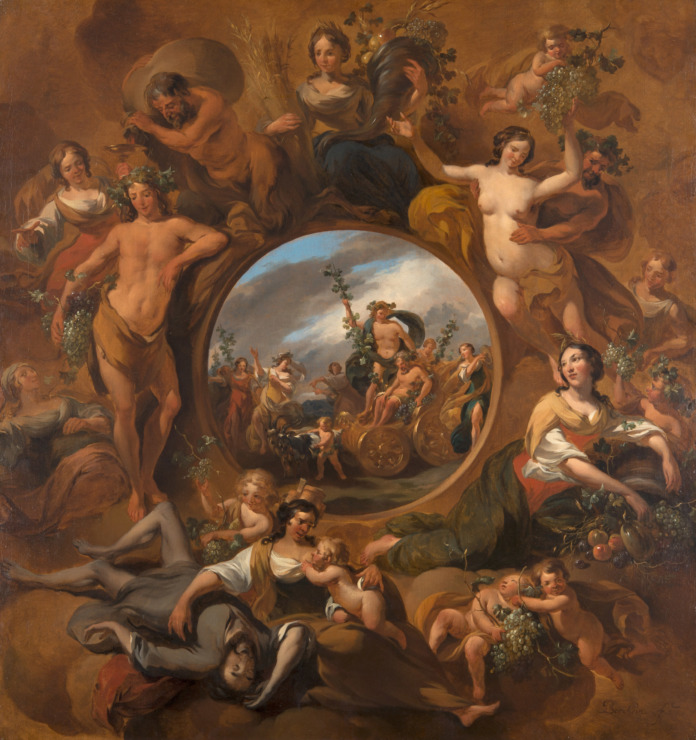The Human Seasons
Four Seasons fill the measure of the year;
There are four seasons in the mind of man:
He has his lusty Spring, when fancy clear
Takes in all beauty with an easy span:
He has his Summer, when luxuriously
Spring’s honied cud of youthful thought he loves
To ruminate, and by such dreaming high
Is nearest unto heaven: quiet coves
His soul has in its Autumn, when his wings
He furleth close; contented so to look
On mists in idleness—to let fair things
Pass by unheeded as a threshold brook.
He has his Winter too of pale misfeature,
Or else he would forego his mortal nature.
-John Keats
Enjoy Artistic Representations of “The Human Seasons” by John Keats

The four seasons,
The series of 1563 by Giuseppe Arcimboldo.

The Four Seasons, Allegory of Autumn by Nicolaes Berchem, 1675.
Listen to Readings of “The Human Seasons”
Listen to this Musical Interpretation of “The Human Seasons” by John Keats
John Keats Biography
Keats was born in London on Oct. 31, 1795; a few weeks later he was baptized at St. Botolph Without Bishopsgate Church, near where his parents lived and father worked as the manager of a stable owned by his father-in-law. Keats was the eldest of four children, with George, Tom, and Fanny following him. The family was well off enough that the boys were sent to Clark’s Academy in Edmonton at what is now the north London borough of Enfield for their education; it was riding his horse home from a visit to the school that Keats’ father fell and died the next day. His mother remarried (rather quickly, in fact), fought with the rest of the family, and died fairly young from consumption or tuberculosis, which was all too common at the time and would eventually claim the life of Keats’ youngest brother, Tom, as well as Keats himself.
He was apprenticed to a local doctor, but the relationship didn’t seem to work too well. He ended up working at St. Guy’s Hospital in the Southwark district of London, continuing his medical training and writing poetry (the site of the original St. Guy’s in now occupied by London’s tallest office building, known locally as “The Shard”).
While Keats had numerous city connections (Anita Miller also has a “Keats in the City” walk), it is with Hampstead that he is most closely associated. Fellow poets lived there, as did the editor who first published his poetry. Artists whom Keats associated with lived there. Keats himself would move there with his brothers. Keats and his friends would wander Hampstead Heath, talking and arguing poetry and the issues of the day. After moving into Wentworth House in Hampstead, Keats wrote five of six famous odes, including “Ode to a Nightingale.” And it would be at Wentworth House in Hampstead that Keats would realize that he was dying from the same disease that took his mother and younger brother.
Enjoyed The Human Seasons by John Keats and want to know more about Keats’ life? Try A Month With Keats: A Walk Into His Life
That’s it for The Human Seasons!
BUY ‘HOW TO WRITE A FORM POEM’ NOW!
